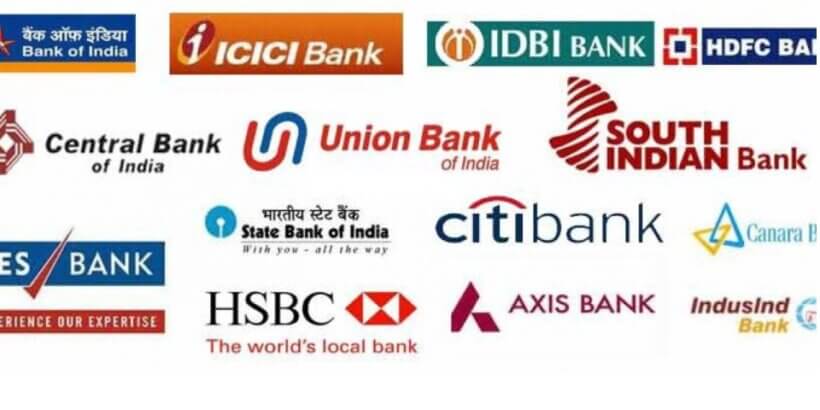Analysis of Top 10 Indian Banks
This report provides a concise overview and analysis of the specified major Indian banks, categorized by their market role, recent financial performance, and strategic positioning as of late 2025.
1. The Big Three (Market Leaders)
These banks dominate the Indian financial landscape in terms of market capitalization, balance sheet size, and pan-India presence.
| Bank | Market Position | Recent Financial Highlights | Key Differentiator |
|---|---|---|---|
| HDFC Bank | Largest private sector bank, known for high asset quality and the post-merger integration drive. | Continues to post robust growth in advances and deposits; focus on leveraging the post-merger scale for cross-selling. Asset quality (NPA ratios) remains best-in-class among peers. | Digital Leadership & Quality: Known for superior digital products and the most stable asset quality metrics. |
| State Bank of India (SBI) | India’s largest public sector bank. A systemic risk institution due to massive size and rural penetration. | Strong credit growth across retail and corporate segments. Public sector revitalization has led to improved profitability and significant reduction in historical NPA burden. | Scale & Reach: Unmatched network, especially in rural and semi-urban areas. De facto bank for government schemes and infrastructure financing. |
| ICICI Bank | One of the most agile and technologically advanced private banks; a strong challenger to HDFC Bank. | Excellent return ratios (RoA, RoE) driven by strong operating performance and controlled credit costs. Aggressive expansion in retail and SME lending, backed by innovative digital platforms. | Execution and Digital Innovation: Strong execution capabilities, often pioneering new digital customer journeys. |
2. Private Sector Challengers (The Mid-Sized Leaders)
These banks offer strong growth and competitive services, often focusing on high-net-worth individuals, specific corporate segments, and robust technology platforms.
- Kotak Mahindra Bank: Continues its focus on high-quality liabilities and maintains one of the highest margins and best valuation multiples in the sector. It is known for its conservative lending approach and strong wealth management/private banking presence.
- Axis Bank: Has undergone a strategic overhaul, focusing on improving retail loan mix and integrating technology. Its acquisition and integration of Citi India’s consumer business significantly bolstered its credit card and wealth portfolio, positioning it as a stronger competitor in the premium segment.
- IndusInd Bank: Known for its niche presence in the vehicle finance and microfinance segments. It is currently focused on diversifying its asset mix, strengthening its deposit base (CASA), and addressing historical corporate exposures to reduce volatility.
3. Public Sector & Turnaround Stories
These banks represent major institutions undergoing significant transformation, focusing on cleaning up balance sheets and modernizing operations.
- Bank of Baroda (BoB) & Bank of India (BoI): Key large public sector lenders that have successfully navigated the NPA cycle. They are now focused on core business growth, digital adoption (especially BoB), and leveraging their large branch networks efficiently following mergers/consolidation efforts in the sector.
- Punjab National Bank (PNB): A nationalized bank focused on consolidating its position post-merger (with United Bank and Oriental Bank of Commerce). The priority remains improving asset quality, enhancing capital adequacy, and streamlining operations.
- Yes Bank: Continues its journey post-reconstruction. While its operational stability has improved, the bank is focused on re-establishing trust, growing its loan book conservatively, and reducing its high-cost liabilities. Its long-term viability hinges on regaining full market confidence.
4. Overall Outlook and Comparison
The Indian banking sector remains a high-growth environment, driven by rising credit demand and economic expansion.
- Market Capitalization Leadership: HDFC Bank and SBI consistently lead the market capitalization charts, reflecting investor confidence in their scale and stability.
- Asset Quality Trend: The sector as a whole has seen a multi-year improvement in asset quality, with Gross Non-Performing Assets (NPAs) at decadal lows, benefiting all major institutions from SBI to Kotak.
- Digitalization: Competition remains fierce, primarily driven by digital offerings. Banks like HDFC, ICICI, and Axis are investing heavily in neo-banking features and integrated financial ecosystems.
- Future Focus: The key battleground is the mobilization of low-cost current and savings account (CASA) deposits, which fuel profitable lending and determine net interest margins (NIMs). Banks with higher CASA ratios (like HDFC and Kotak) generally enjoy a cost advantage.
This list represents the core of the Indian banking financial system, offering a mix of stable, growth-oriented, and turnaround investment opportunities.
Providing a comprehensive, real-time list of the top 10 banks in India with all requested metrics (History, Founded Date, Present CEO/Chairman, exact real-time Assets, Liability, Revenue, full Deposit/Loan Product list, and specific Special/Future products for 2025/2026) is challenging because:
- Top 10 Ranking Fluctuates: The ranking can vary significantly based on the metric used (assets, market capitalization, network size, etc.) and changes frequently.
- Financials are Dynamic: Exact real-time Assets, Liabilities, and Revenue change daily. Published figures are usually quarterly or annual and lag.
- Product Lists are Extensive: Complete Deposit and Loan Product Lists are vast and contain many variants, too extensive for a concise answer.
- Future Products are Confidential: Specific “Future Products 2026” are generally proprietary and not publicly disclosed by banks in advance.
However, I can provide a summarized overview of the Top 3 Banks in India (typically based on combined metrics like market capitalization and assets) for key fields like history, leadership, and product categories as of late 2025.
Top Banks in India Overview (as of late 2025)
The top banks generally include the State Bank of India (Public Sector) and the largest private sector banks like HDFC Bank and ICICI Bank.

